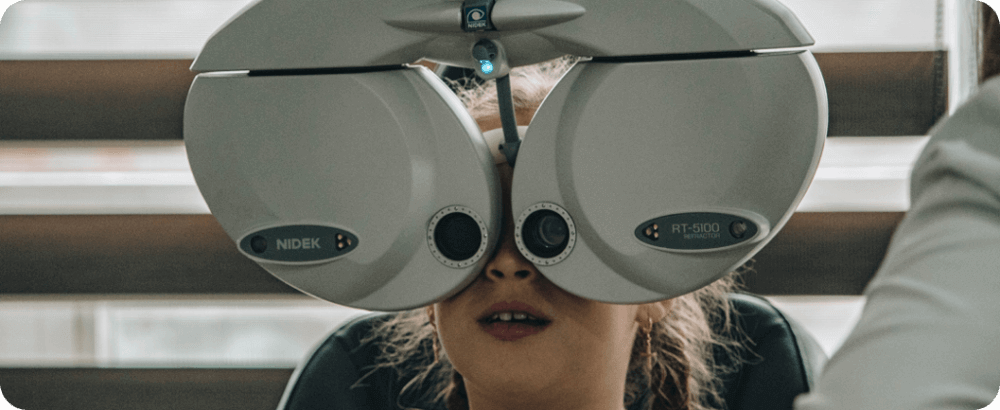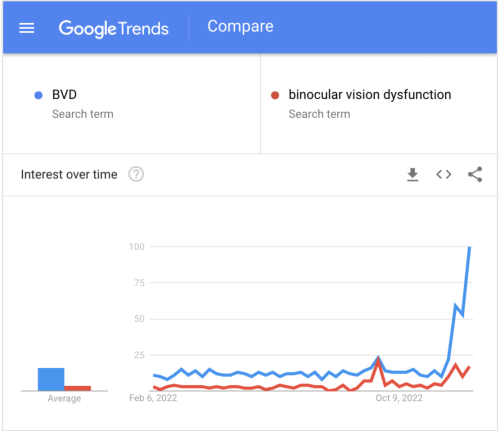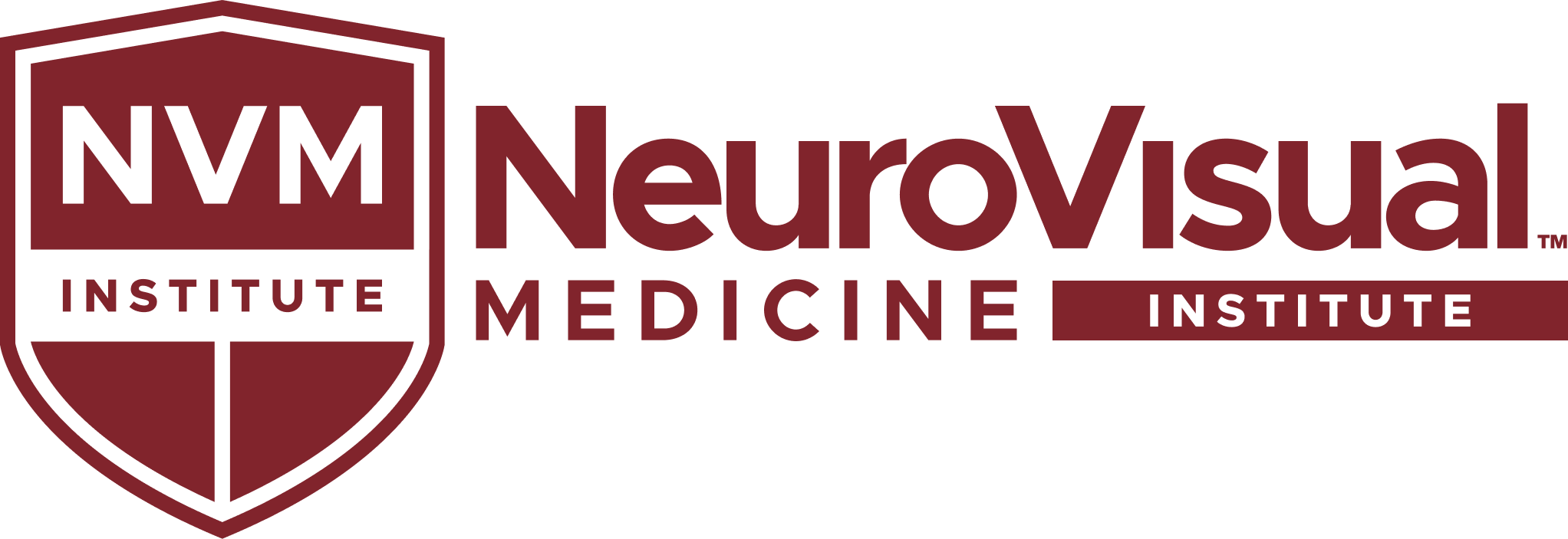Uncovering the Hidden Epidemic: How to Screen for Binocular Vision Dysfunction in Your Optometry Practice
As an optometrist, you're motivated to provide the best care for your patients. But when it comes to Binocular Vision Dysfunction (BVD), it’s easy to miss on a routine eye exam because the traditional exam methods aren’t designed to find small vision misalignments.
Matt Rosner
- 5 min read

Why Traditional Tests Fall Short
Historically, only patients who have diplopia or severe eye misalignment are identified as needing binocular vision care. But out of the approximately 42 million people in the US who visit an optometrist every year, an estimated 10 million of them have undiagnosed BVD. That's a lot of patients who are suffering daily from migraines, motion sickness, chronic neck pain, and anxiety.
Mainstream phoria tests such as Von Graefe phorias, vertical vergence, fixation disparity or near point of convergence are able to identify the 1/3 of BVD patients who have larger eye misalignment issues but most often miss the 2/3 of BVD patients who have more subtle misalignments. For decades, we have needed something that can better predict if a patient has a phoria and the likelihood that they would respond to treatment.
Introducing the BVDQ: A Powerful Tool for Identifying BVD
This is where the BVDQ™ comes in. This innovative, validated screening tool is specifically designed to help optometrists like you identify people who are suffering from the traditional as well as the non-traditional symptoms of Binocular Vision Dysfunction and who need help.
Over 50,000 patients have completed the BVDQ™, and it only takes 5 minutes to complete. It is simple to use and gives you accurate results in minutes, allowing you to identify people with previously overlooked but impactful BVD symptoms. With good data, you can confidently recommend the next steps in their care to overcome their symptoms and improve their lives. Patients who score above the symptom threshold on the BVDQ™ can benefit from a proper NeuroVisual exam and a pair of microprism lenses to relieve their symptoms.
Sign up to gain access to BVDQ™ Screening System
We’re currently offering a free version of the BVDQ™ Screening System to a limited number of practices to help them find out exactly how many of their patients need help.
Why is early detection of BVD so crucial?
The longer a patient goes without proper treatment, the more they suffer. And there’s a surprising number of people in the US who experience these symptoms on a regular basis. An estimated 10 million patients who visit an optometrist every year have undiagnosed BVD. By using the BVDQ™, you can differentiate yourself from other optometrists who are still relying on outdated approaches to identify Binocular Vision issues. Become the go-to expert for your patients to ask about BVD, and to get them on the road to recovery.
The Benefits of Using the BVDQ™ for in Practice
The benefits of using the BVDQ™ are clear. There is an estimated 20% of current patients in your practice today experiencing the symptoms of subtle phorias that have not been identified. This means that a significant portion of your patient base is suffering from a condition that can be treated quickly and easily with microprism lenses - vision therapy is not required. It's an easy-to-use tool that can be completed by patients in your waiting room. By screening every patient for BVD, you not only provide better care for your patients, but you could also increase your RPP (Revenue Per Patient) by offering additional treatment services such as NeuroVisual Medicine.
Real-World Data: The BVDQ™ in Action
An optometry practice in Baltimore, MD recently surveyed 250 of their routine and specialty patients over a 6-week period for BVD, to identify the possible benefits of adding a NeuroVisual Specialty to their clinic. This clinic offered specialty eye care, but no binocular vision or neuro-optometry services.
The outcomes?
Out of those 250 patients, 61 were identified as symptomatic for BVD – that’s 1-in-4 patients, previously undiagnosed for BVD until now, searching for and needing help. Once you identify patients in your practice with Binocular Vision Dysfunction, you have the opportunity to relieve their symptoms and change their lives. Here’s one patient's story of her BVD and relief with microprism glasses.
Patients are learning about BVD on Google, TikTok, and YouTube!
Patient awareness of BVD is growing quickly, and these patients are beginning to seek out optometrists who specialize in treating the condition and who are confident in prescribing microprisms. Patient and doctor videos tagged #binocularvisiondysfunction on TikTok just reached 3 million views. Patient demand for BVD treatment is predicted to increase by 300-500% in the coming decade. By incorporating the BVDQ™ and NeuroVisual Medicine into your practice, you're positioning yourself as a leader in the field and demonstrating your commitment to providing cutting-edge care for your patients.

Take the BVDQ™ Challenge for your Practice
Identify the 20% of your patients who have BVD in just 20 days.
Sign up to get access to BVDQ™ Screening System
Your patients (and practice manager) will thank you for it.
We’re currently offering the BVDQ™ Screening System to a limited number of practices at no cost. Apply to run the BVDQ Challenge in your clinic and find out just how many of your patients need help. It only takes 2 minutes to sign up and it’s completely free.
Here’s how to get started:
- First, sign up to get access to BVDQ™ Screening System
- Once you’re approved, we’ll email you a customized BVDQ™ QR Code Postcard to print for your waiting room, give to patients, and share in your exam room. We'll also send you a unique link to share with your patients via email or text.
- Then, it’s time to begin! On day 1, begin having all of your patients scan the QR code and complete the questionnaire in your waiting room. Each time a patient completes the BVDQ™, you’ll get an email with all of their symptom results data.
- After 20 days and/or 100 patient BVDQs, you will unlock a Free BVDQ™ Data deep-dive analysis. In this 30-minute session, we’ll review your BVDQ™ Dashboard and share meaningful analysis about your patient’s BVD prevalence in your practice. We’ll also crunch the numbers with you to see how much additional revenue you could add to your practice by providing NeuroVisual Medicine services for your patients.
- That’s it!
Curious how NeuroVisual Medicine might impact your practice? Let’s Chat!
